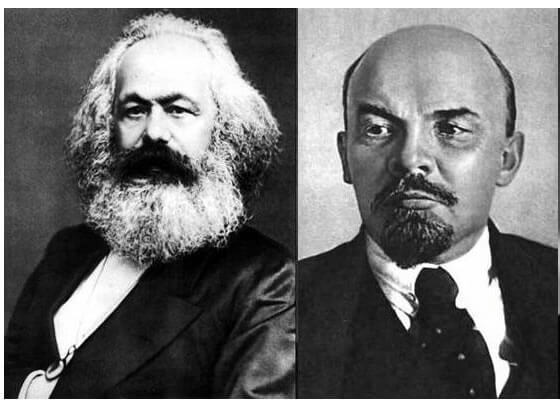By
To wrest back control from private finance, to reclaim our “hollowed out democratic institutions,” we must begin with a public understanding of money. Book review.
The UK is feeling pretty divided at the moment, yet there is one thing that is likely to unite people across the political spectrum: a contempt for bankers. Back in 2015 ‘the deficit’ was a powerful concept used to promote the case for austerity. We needed, we kept being reminded, to “balance the books”. The promise was that we were all ‘in it together’, but the pain has turned out to be far from evenly distributed.
In a memorable article, the economist Simon Wren-Lewis beautifully unpicked the concept of ‘the deficit’ and its advancement of the case for, as he called it, the “austerity con”. Given its profound consequences, which are only now becoming fully visible, it is not surprising that the anger continues to simmer even when these ideas are no longer at the forefront of political debate. Talk of deficits and austerity may have faded into the background – although, as the political journalist Helen Lewis has pointed out, they have not actually disappeared from the policy agenda – but the banker still remains a figure of disdain and suspicion.
Into this divided, baffling and tense political and economic landscape, Ann Pettifor’s neat intervention, The Production of Money: How to Break the Power of Bankers (Verso 2017), adds clarity about the role played by money. Aimed at enabling more informed debate, Pettifor carefully unpicks what is happening with money today. This is a short book heavy with credibility. Its key premise is that the financial crisis of 2007-09 created the possibilities for inequality to grow. As this suggests, this is not just a book about money, it is a book about power and control.
The financial crisis of 2007-09 created the possibilities for inequality to grow.
In a pragmatic mode, Pettifor focuses on what needs to be done. First, she says, we need a public understanding of money and complex monetary systems. Her book is aimed at facilitating this knowledge. Second, she wants us to channel our anger and sense of unfairness to drive us towards a progressive future. A problem Pettifor emphasises here is not just with the lack of knowledge, but with those who conceal and divert attention. This book can be seen as part of a growing disquiet over orthodox economics and the ‘econocracy’.
Pettifor goes as far as to claim that when it comes to the distribution of power and inequality “most orthodox economists are at fault”. Indeed, what she refers to as “orthodox economists” don’t come out of this book very well. Their “blindspots” and “blinkers” become responsible for missing what is happening and for letting the crisis unfold whilst the wealthy turn this predicament to their advantage. The orthodox economist’s “indifference” to questions of money, Pettifor is claiming, actually enable this unchecked type of power.
A core idea in the book is that the relations between public and private money need to be rethought. There is, for Pettifor, an apparent power imbalance at work here. There are a few phrases that encapsulate this, such as the opening salvo that the “global finance sector today exercises extraordinary power over society and in particular over governments, industry and labour”. What matters in this is the “management and control” of the “production of money”. Pettifor adds that the crucial question is “who controls the creation of money? And to what end is that money created?”. Here we have the questions that this book places at the centre of how power operates and inequality is forged.
Unsurprisingly, the risks attached to inflation and deflation get a good deal of attention. As do interest rates and assets, capital and prices. As a translational resource the book is very helpful. Avoiding dry detail, these are explanations with a purpose. Alongside the descriptions come clear illustrations of how money can be complicit in injustice and inequality. It is here that we begin to see how public structures prop up private wealth generation for the richest. As Pettifor puts it:
“One of the great injustices of a banking system controlled by private wealth is that private money production does not exist in isolation. It is part of, and dependent on, the public infrastructure that makes up a nation’s monetary, economic, taxation, legal and criminal justice systems.”
The entwining of the public and private creates a platform for injustice to thrive by enabling those with wealth to use the public infrastructure to extend their private finance. As a result, the post-crash economic conditions were ripe for those with assets to make themselves richer. In particular, Pettifor points out, the “post-2009 asset price inflation wildly enriched the rich while those without assets were further impoverished”.
“Inequality,” she adds, “predictably widened”. We see the results in foodbanks, teetering public services and what has been carefully described by Tom Crewe as the “strange death of municipal England” – a phrase which might sound quaint but which is used to powerfully uncover a fragility of social support which is playing out in the closure of libraries, public toilets, eroding social care and dwindling support structures for people who find themselves homeless.
One source of disparity, for Pettifor, occurs around the setting of “the price of money” or interest rates. Even where central bank rates are low, real rates can be very high. Pettifor goes as far as to claim that it was “higher interest rates that, like a dagger pointed at a balloon, burst the credit/asset price bubble that precipitated the crash of 2007-09”. The role of a central bank, Pettifor points out, is to determine and maintain the value of currency. These activities are closely connected to tax intakes and financial solidity. Because of these interconnections central banks exist to “maintain financial stability for the economy as a whole”. The problem is that although central banks set a rate they are open to being reworked in the actual economy.
In one key passage Pettifor lays out what is at stake here. She argues that:
“from the 1960s onwards, private wealth, led largely by private bankers, in collusion with elected politicians, began to wrest control of the monetary system away from the regulatory democracy of governments. Today the global economy is effectively governed by a small number of actors based in private global banks and other financial institutions. They manage the system in their own vested interests to the detriment of wider society. In the absence of any real political challenge from society, private wealth owners have used the public infrastructure of money and their power over private money production, to amass astounding amounts of wealth.”
This is what Pettifor is arguing needs to be addressed. Power can only be rebalanced if the power over the production of money is recast, if the setting of interest rates changes hands and if a political challenge is made to those who are able to leverage power over national governments. Instead what has happened, Pettifor provocatively contends, is that “despotic power” has been “conceded” to “finance capitalism”. With ideas like “there is no money” used to promote certain ideological projects for shrinking the state and other austerity dreams.
The point here is that these moments of crisis created opportunities to maintain this power imbalance rather than resolve it. It was here that “ideologically driven governments used the opportunity of the crisis to cut back on welfare payments and to privatise public services”. As Phillip Mirowski has described, there is a sense here of never letting a serious crisis go to waste.
The use of public infrastructure to create private wealth has also then, Pettifor claims, “hollowed out democratic institutions”. So as public systems afford private wealth creation those public services suffer. Which might be why we are now seeing reports of a crumbling national health services, prisons and policing and schools under pressure along with staggering rises the number of people being made homeless (with a 16% increase in the UK in the last year).
Pettifor is openly disappointed with the money reform movement. She is clear on the limitations of coded currencies like Bitcoin and initiatives like ‘the people’s Quantitative Easing’. Many of these alternatives, she points out, continue the pattern of placing power in the hands of technocrats, and outside of the reach of democratic structures and decision making.
These alternatives also fail to ‘reform and manage’ the interest rates across all types of lending. The only solution, according to Pettifor, is to bring an end to the despotic power of bankers that is based in deregulation whilst also making clear that their wealth is being created on the back of public infrastructures. This is the route Pettifor maps out for the shift to the “creation of a socially just monetary system”. It is only an increased understanding of credit and monetary systems that will drive the “political will” to achieve this.
Pettifor is interested in illuminating the nuts and bolts of money in a way that is quite different to many of the other recent books on the future of capitalism. As I read Pettifor’s book, I kept picturing Donald Trump on his reality TV show. He was riding on a speedboat, his luminescent mane blowing in the wind, to the familiar musical refrain, of “money, money, money…”. In an impressionistic way, that image seems to encapsulate the vision of power in Pettifor’s book.
Riding the wave of capital this book explains how the rich get richer and how crisis enables those with capital to stretch away from those without. Pettifor’s book is a story of inequality. It is a rallying cry well worth reading as we watch the current political campaigning unfold and as the Brexit negotiations lurch forward. Pettifor’s book may well inform debate and provide a source of knowledge for a better understanding of the relations between money and power, but, at the same time, its details make it clear that it’s going to be quite a task to divert the speedboat from its path down shit-creek.











